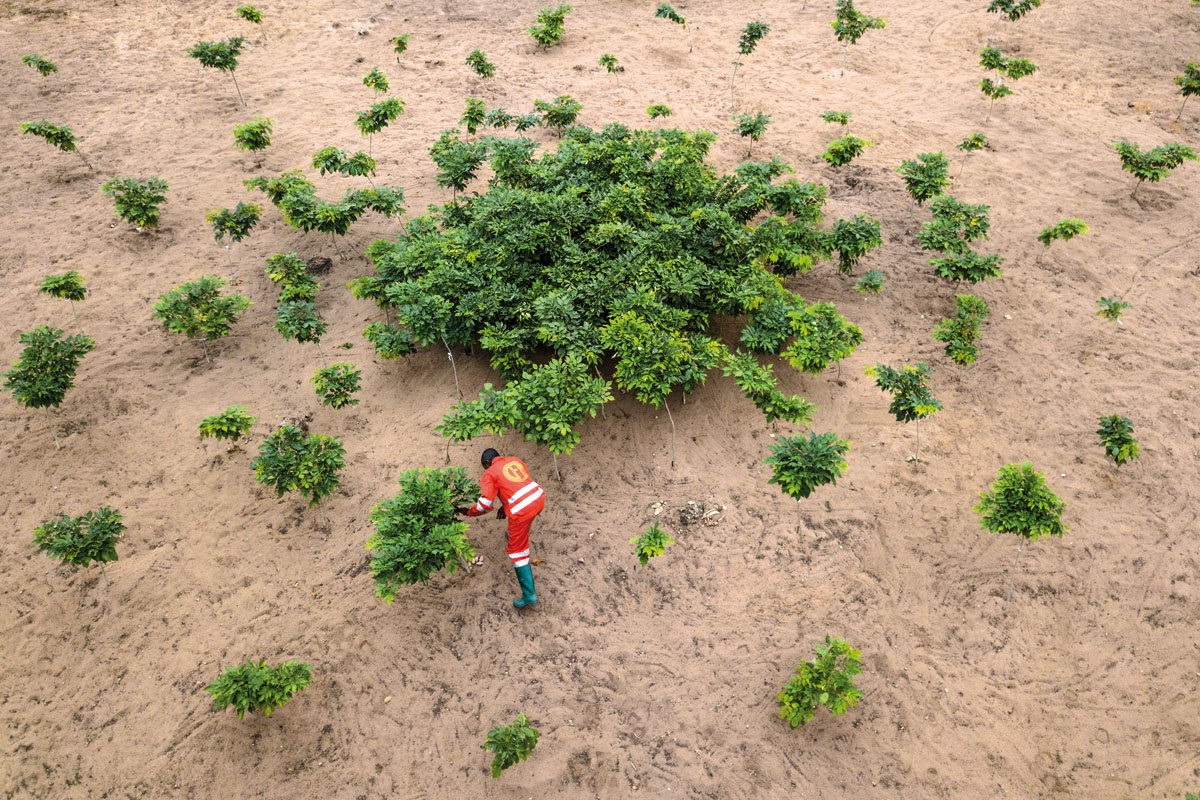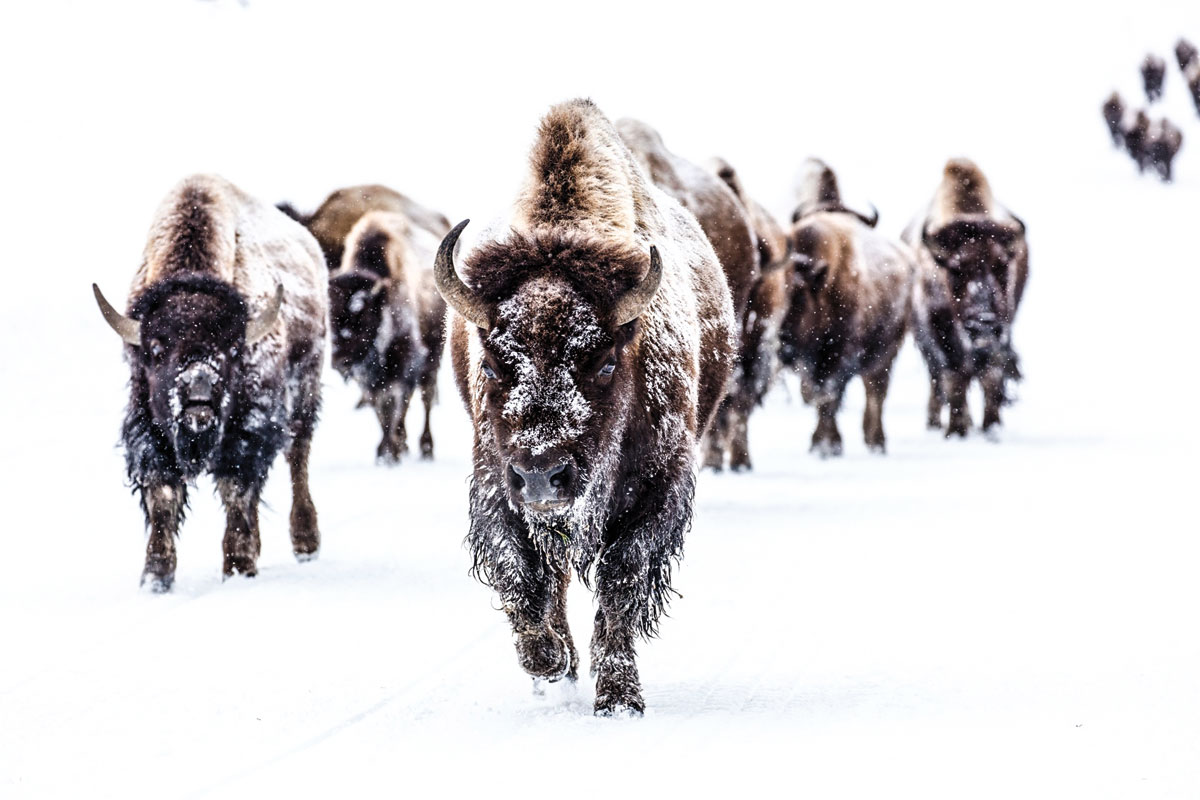Can Rewilding Save The Paris Agreement?
First published in Sanctuary Asia,
Vol. 43
No. 10,
October 2023
By Shailendra Yashwant
Not very long ago, on an island on the Brahmaputra river, Jadav Payeng of the Mishing tribe of Northeast India, a man of few means but a lot of determination, who had raised and nurtured a forest for 30 years told me, “No more global warming, if everyone plants forest,” when I interviewed him for Sanctuary Asia magazine. His was a solitary, selfless rewilding mission driven by intuition and compassion, and his forest stands tall today, giving shade and sanctuary to a myriad creatures in almost 150 hectares… and counting.
Around the same time, in far away West Sussex in England, Charlie Burrell and Isabella Tree started rewilding their loss-making farm estate into what is now known as Knepp Wildland, a 1,400 hectare rewilding project, which plays home to a variety of wildlife, including critically endangered nightingales and Turtle Doves. Meanwhile in Spain, Black Vultures, lynx and wild horses are among the animals that are being reintroduced with the launch of a rewilding project spanning 850,000 hectares in the Iberian highlands east of Madrid.

A reforestation project in Kisangani, DRC. Rewilding is complementary to existing ecological restoration and conservation approaches. Photo: Public domain/Axel Fassio/CIFOR.
Committing To Rewilding
The Global Rewilding Alliance, created in 2020, suggests that rewilding the Earth will “stabilise the climate, halt mass extinction, and reduce the risk of new pandemics”. Rewilding is best defined as restoration to promote self-regulating complex ecosystems through restoring non-human ecological factors and processes, while reducing human control and pressures. Rewilding is an idea that sits within and is complementary to existing ecological restoration and conservation approaches.
Not surprisingly, rewilding projects have been initiated around the world as a response to our biodiversity and climate crises. Both are intrinsic to critical initiatives including the UN Sustainable Development Goals, the Decade on Ecosystem Restoration, Global Biodiversity Framework, Nature-based Solutions (NbS), and uncounted human health initiatives.
The latest report of the Intergovernmental Panel on Climate Change (IPCC) direly warned that we are unlikely to achieve the goals of the 2015 Paris Climate Agreement to cut all sectors in half by 2030, let alone reaching net zero emissions by 2050. However, the report tempers that message by stating that if we act now, and act fast, we can still correct course. This would involve reducing annual emissions by billions of tonnes of CO2-equivalent (GtCO2-eq) between now and 2050.
One of the five quick means to achieve emissions reduction, according to the IPCC involves “reducing the conversion of natural ecosystems” (4.0 GtCO2-eq/year reduction) and restoring, afforesting and reforesting ecosystems (2.8 GtCO2-eq/year reduction). This would help meet nearly half of the Paris Agreement targets, while the rest would be a result of increased renewable energy uptake and soil sequestration from agricultural adaptation.
The report also hones in on the importance of maintaining the adaptability and resilience of natural species and ecosystem functions and services by ensuring “effective and equitable conservation of approximately 30 to 50 per cent of Earth’s land, freshwater and ocean areas”.
The inalienable truth is that species constituting Earth’s plant and animal biodiversity regulate the planet’s ecosystems, thus helping to bring our climate back to balance. More than 99 per cent of the four billion species that have evolved on Earth are now extinct. A 2019 report from the UN found that currently around one million animal and plant species are facing extinction, many within mere decades, a rate unprecedented in human history.
-1200_1696572161.jpg)
Jadav Payeng, Sanctuary Wildlife Service Award 2012 winner, in the forest he planted and nurtured for over 30 years. “No more global warming, if everyone plants forest,” he told the author. Photo: Raj Phukan.
Why Rewild?
Protecting and conserving forests can reduce the risk of zoonotic diseases, such as coronaviruses, anthrax, and tuberculosis. Emerging evidence shows that one in three outbreaks are linked to deforestation and land use changes. Economic research reveals that investing in forests can lift one billion people out of poverty, create 80 million green jobs, and enhance environmental and social resilience.
Land could be our greatest ally in fighting climate change, provided we work to restore terrestrial ecosystems back to health. One in every five hectares of land has been rendered unfit to deliver the ecological services they used to perform. By some accounts, restoring just 350 million hectares of degraded land could, by 2030, remove greenhouse gases approximating half the globe’s annual atmospheric emissions. Inaction or procrastination is irresponsible and unforgiveable, particularly when virtually all nations signed on to rapidly reduce their carbon emissions to meet the life-or-death Paris Agreement goals.
The United Nations (UN) declared 2021-2030 as the UN Decade on Ecosystem Restoration with the explicit aim “to prevent, halt, and reverse the degradation of ecosystems on every continent and in every ocean,” to help end poverty, combat climate change and prevent mass extinction. Restoration will only have a meaningful impact on the biodiversity and climate crises when nations recognise the common threat, and use strategies such as Accelerated Carbon Capture (ACC) across vast proportions of land and sea.
Encouragingly, a vast number of countries and corporations made unambiguous commitments to keep the land healthy during the UN Decade for Deserts and the Fight against Desertification, which ended last year. Over 100 countries are now pursuing Land Degradation Neutrality goals through the UN Convention to Combat Desertification. This is 450 million hectares of commitments and counting – roughly half of the one billion in global restoration commitments to date.
The task before ‘ordinary people’ is to hold those in positions of power to the promises they make, but often forget. Towards this end, young people are raising their voices and its time their elders did right by their progeny.

Photo: The Global Rewilding Alliance.
Can Rewilding Save The Climate?
According to a recent study ‘Trophic rewilding can expand natural climate solutions’ published in the journal Nature Climate Change, protecting wildlife and restoring species populations around the world could supercharge ecosystem carbon sinks and thereby dramatically enhance carbon capture and storage.
Rewilding plant and animal populations to enhance natural carbon capture and storage, or ‘Animating the Carbon Cycle’ (ACC) demonstrates how wild species play a critical role in controlling the carbon cycle in terrestrial, freshwater, and marine ecosystems through a wide and complex range of processes.
Fifteen scientists from eight countries examined nine wildlife populations – marine fish, whales, sharks, grey wolves, wildebeest, sea otters, musk oxen, African forest elephants, and American bison. They discovered that protecting or restoring species populations could facilitate the capture of an additional 6.41 billion tonnes of CO2 year on year (6.41GtCO2-eq/yr)! They accomplish this by simply living; by foraging, rearranging their habitats’ nutrient and organic carbon depositions, and through seed dispersal. The loss or absence of animals dramatically alters the dynamics of carbon uptake and storage.
Astonishingly, this is comparable to the potential CO2 emissions reductions from solar, wind, and carbon sequestration in agriculture combined! What is more, this quantum of carbon capture amounts to 95 per cent of the Paris Agreement target promise to keep global warming below the 1.50C threshold.

American bison in the snow. Protecting and restoring wild species can supercharge ecosystem carbon sinks. Photo: Public domain/Jean Beaufort.
Proponents of rewilding tend to highlight the shortcomings of business-as-usual biodiversity conservation strategies, arguing that rewilding represents a bold and proactive approach needed to tackle the unprecedented biodiversity crisis of the 21st Century.
They describe rewilding as an effective way to address the biodiversity crisis in an age of widespread anthropogenic global change, by unleashing the intrinsic resilience and transformative capacity of nature. But to be successful, any rewilding project should be inclusive of all stakeholders and embrace participatory approaches and transparent local consultation in the planning process. Rewilding must encourage public understanding and appreciation of wild nature and address existing concerns relating to human coexistence with wildlife and natural processes.
Shailendra Yashwant is an independent environmental journalist and senior advisor to Climate Action Network South Asia (CANSA).

-1920.jpg)

-1200_1696572161.jpg)

